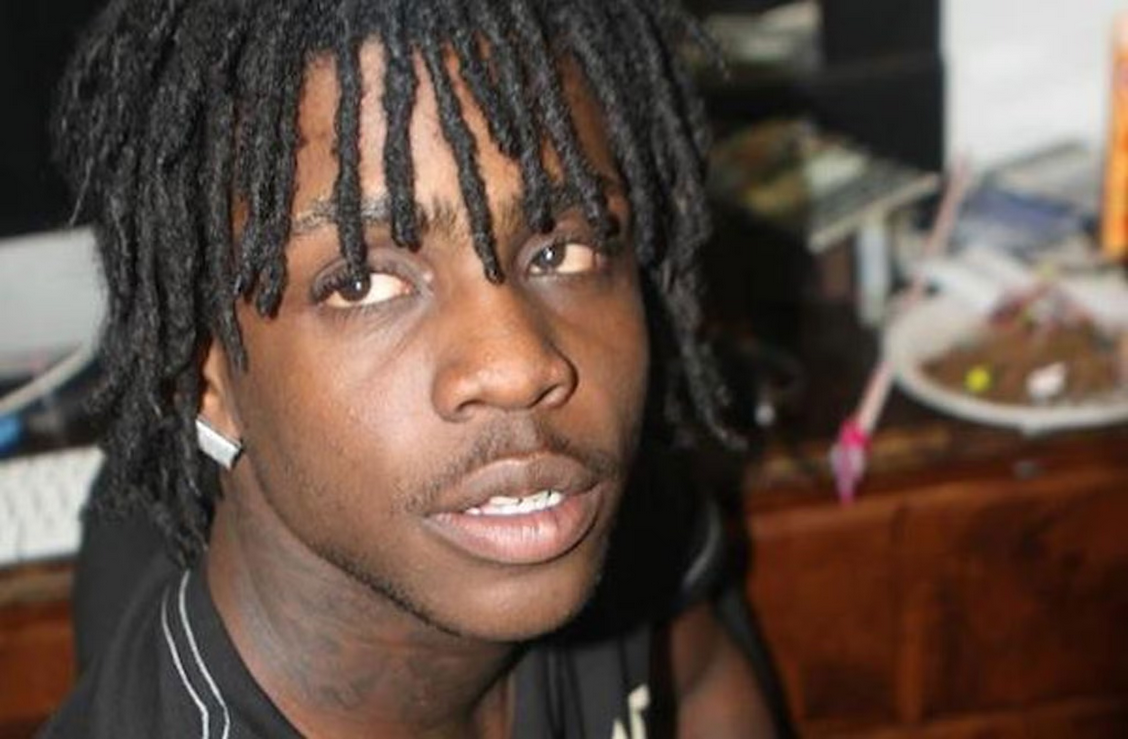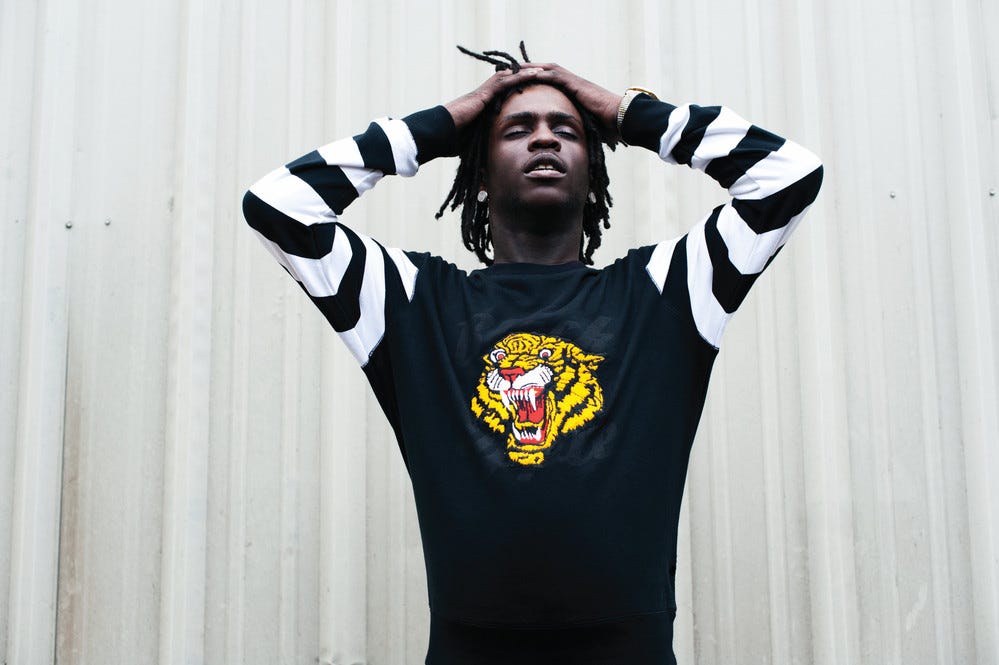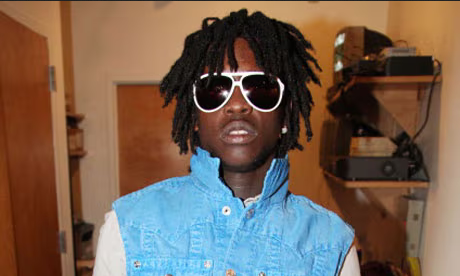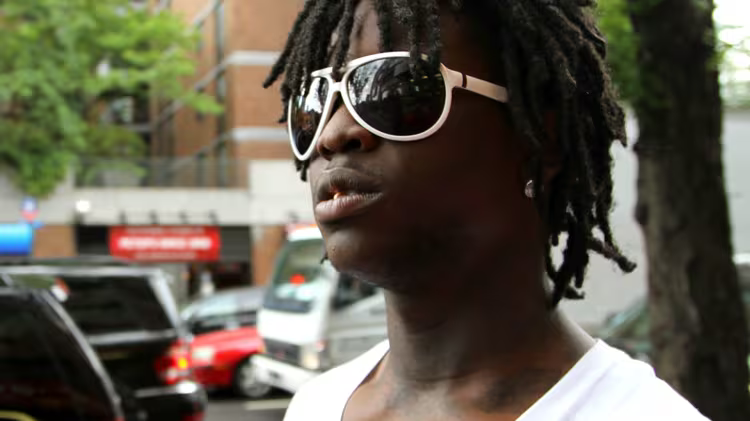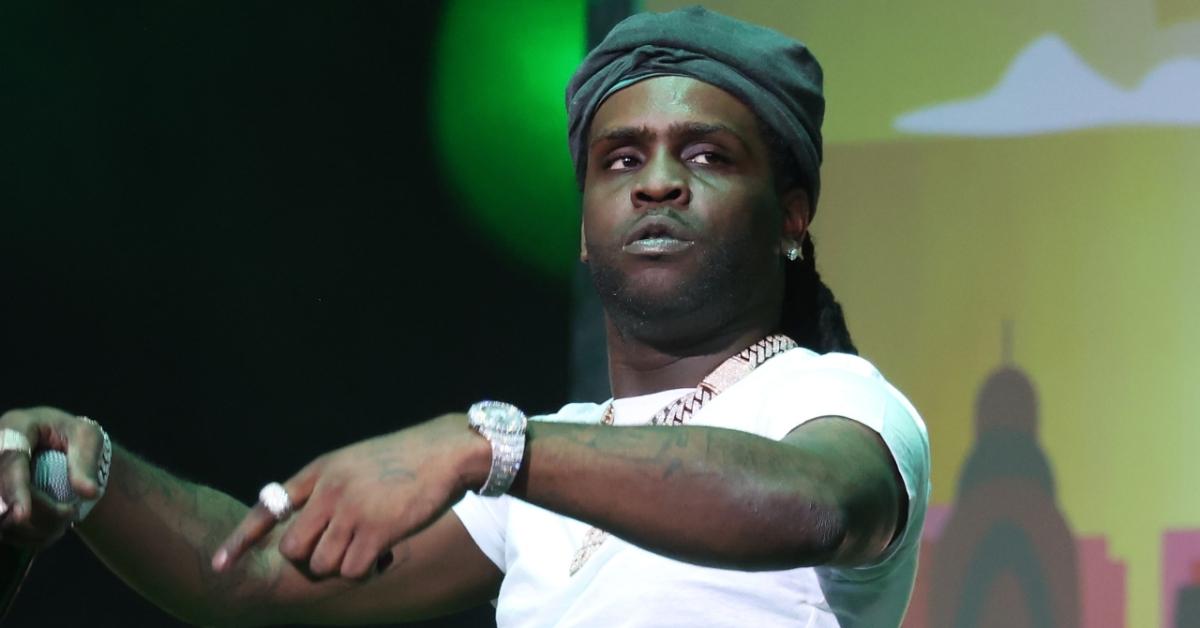SUMMARY:
- Keith Farrelle Cozart, known as Chief Keef, born on August 15, 1995, found himself facing legal challenges at the age of 22. His arrest in Miami Beach for a DUI marked another publicized incident in his life.
- During the arrest, authorities discovered Chief Keef with a cup containing a “syrupy liquid,” leading to charges that spotlight his struggles beyond his music career. This incident added to his history of legal issues, reflecting the complex relationship between his personal life and public persona.
- Despite the setbacks, Chief Keef’s influence in the music industry, particularly within the drill genre, remains undeniable. His experiences, including run-ins with the law, have shaped not only his music but also his role in the narrative of contemporary hip-hop culture.
Keith Farrelle Cozart, known to the world as Chief Keef, has been a prominent figure in the music industry since he was just a teenager.
Now at 28 years old, this Chicago-born rapper, singer, songwriter, and record producer has made headlines not only for his contributions to the drill genre but also for his encounters with the law. Born on August 15, 1995, Chief Keef’s rise to fame was meteoric, thanks to his raw depiction of life in Chicago’s South Side through hits like “I Don’t Like” and his debut album “Finally Rich.”
However, his journey has been marked by several legal issues, leading to various mugshots that have circulated online. These images have become a part of the narrative surrounding his career, illustrating the challenges he has faced beyond the music scene.
Despite these setbacks, Chief Keef has continued to influence the hip-hop industry, shaping the sound of modern rap and inspiring a new generation of artists.
Who Is Chief Keef?
Keith Farrelle Cozart, widely recognized by his stage name Chief Keef, has carved out a significant niche in the American music scene as a rapper, singer, songwriter, and record producer.
Born on August 15, 1995, in Chicago, Illinois, his journey from a local talent to a national figure in hip-hop is a tale of talent, controversy, and resilience.
- The Early Years: Chief Keef’s story begins in the challenging environments of Chicago’s South Side, where he was born to a teenage mother, Lolita Carter. His upbringing in these surroundings played a crucial role in shaping his musical themes and artistic voice. Despite the obstacles, Keef’s passion for music emerged early, and he began to make waves with his unique sound while still in his teens.
- Rise to Fame: Keef’s breakthrough came with the 2012 hit single “I Don’t Like,” which caught the attention of music fans nationwide and led to a remix featuring Kanye West, Pusha T, Jadakiss, and Big Sean. This track not only propelled Chief Keef into the spotlight but also highlighted the raw energy of Chicago’s drill music scene to a broader audience. Following this success, his debut album Finally Rich was released in December 2012, featuring hits like “Love Sosa” and “Hate Bein’ Sober.”
- Legal Challenges and Public Image: Throughout his career, Chief Keef’s talent has often been overshadowed by his legal troubles, including charges related to weapon possession, probation violations, and drug offenses. These incidents have contributed to a complex public image, portraying him as both a product of systemic issues and a controversial figure within the music industry.
- Continued Influence and Work: Despite the hurdles, Chief Keef has maintained a prolific output, influencing the direction of hip-hop and drill music. His work has inspired a new generation of artists, and he has continued to release music, including collaborations with other prominent figures in the industry. With over 10 million followers on Instagram, his influence extends beyond music, impacting fashion and lifestyle.
- Today and Beyond: As of 2024, Chief Keef remains a pivotal figure in the rap game. His journey from the streets of Chicago to national fame encapsulates the challenges and triumphs faced by many young artists in America. Through his music and persona, Chief Keef has become a voice for the voiceless, providing insight into the struggles and aspirations of urban youth.
Chief Keef’s career is a testament to the power of resilience and the impact of authenticity in art.
From his early days in Chicago to his current status as a veteran in the hip-hop community, his journey reflects the complexities of fame, the evolution of music, and the enduring spirit of creativity.
Dissecting Chief Keef’s Mugshot – Everything You MUST Know!
Chief Keef, a name synonymous with the drill music genre and known for his profound influence on hip-hop, found himself in the headlines once again, but not for his music.
On April 9, 2017, the rapper was arrested in Miami Beach, an event that quickly circulated across the internet, largely due to the peculiar nature of his mugshot.
The Arrest
The 22-year-old, whose real name is Keith Cozart, faced charges of driving under the influence (DUI) after police discovered him with a cup filled with a “syrupy liquid,” suspected to be “sizzurp” or “purple drank,” a concoction typically made from a mixture of prescription cough syrup and soda.
The incident led to his arrest on a Saturday in Miami Beach, marking another addition to the rapper’s history of legal issues.
The Mugshot
What captured public attention, however, was not just the arrest itself but the mugshot that followed. In the photograph, Chief Keef appears unfazed, if not slightly amused, by the situation. Licking his lips in a manner that some might describe as bizarre, his expression in the mugshot has sparked various reactions online.
Hollywood Life described his demeanor as not looking “scared or upset at all,” highlighting the rapper’s seemingly cavalier attitude towards his arrest.
Public and Commercial Interest
Following the release of the mugshot, it didn’t take long for it to become a subject of fascination, discussion, and even commercial interest. Various products featuring the mugshot image, ranging from posters to stickers and greeting cards, began to appear on online platforms like Redbubble and Pinterest, showcasing the peculiar way in which popular culture can commodify moments of personal adversity.
These items underscore the odd intersection between celebrity misfortunes and consumer interest, turning a legal issue into a meme-like phenomenon.
The Aftermath
While the incident adds another chapter to Chief Keef’s complex relationship with the law, it also reflects broader themes of fame, accountability, and the public’s insatiable appetite for celebrity news—even at its most unfortunate.
The mugshot and the events surrounding it serve as a reminder of the rapper’s turbulent journey, marked by immense talent on one hand and a series of legal entanglements on the other.
Chief Keef’s Troubled Past and Legal History
Chief Keef, born Keith Farrelle Cozart, has traversed a path marked by both remarkable musical success and significant legal challenges.
His journey from the South Side of Chicago to the forefront of the hip-hop scene has been intertwined with encounters with the law, reflecting the complexities of sudden fame and a challenging upbringing.
At 16, Keef faced his first major legal issue with an arrest for the unlawful use of a weapon, setting the stage for a series of legal battles that would accompany his rising career. These issues ranged from drug possession charges to driving under the influence, highlighting the stark realities of his life and environment. A notable moment came in 2013 when a probation violation for firing a gun at a gun range led to jail time, underscoring the tension between his public persona and private struggles.
Despite these obstacles, Chief Keef’s music continues to resonate, with his legal troubles adding depth to his work and persona within the hip-hop industry. His story is a nuanced tale of talent, adversity, and the impact of systemic issues, making him a complex figure in the landscape of modern music.
The Arrest That Led to the Mugshot
In a notable chapter of Chief Keef’s tumultuous journey, an arrest in Miami Beach on April 8, 2017, captured widespread attention, not only for the circumstances leading up to it but also for the iconic mugshot that emerged thereafter.
This incident added another layer to the complex narrative surrounding the rapper’s career and legal history.
Chief Keef was detained by law enforcement officers after a traffic stop revealed a substance believed to be marijuana in his vehicle. The situation escalated when Keef reportedly failed a sobriety test, leading to charges of driving under the influence (DUI). This event was significant as it highlighted the ongoing challenges Keef faced in balancing his rising music career with the repercussions of his lifestyle choices.
The mugshot taken after his arrest quickly went viral, showcasing Chief Keef with an uncharacteristically light-hearted expression.
This image became a focal point for discussions about the rapper, symbolizing the public’s fascination with celebrity legal troubles and the peculiarities of pop culture’s engagement with such incidents.
This arrest and the subsequent mugshot are emblematic of the broader narrative of Chief Keef’s life so far—a talented artist continually navigating the pitfalls of fame and personal adversity. While the rapper’s legal issues have often overshadowed his musical achievements, they have also contributed to the depth and authenticity of his work, resonating with fans and critics alike.
Chief Keef’s Influence on Music and Youth Culture
Chief Keef, a pivotal figure in the evolution of modern hip-hop, has left an indelible mark on both the music industry and youth culture through his influential songs and albums.
Since bursting onto the scene with his viral hit “Bang,” Keef has been instrumental in shaping the sound and direction of contemporary rap, particularly within the drill subgenre, which reflects the gritty realities of urban life.
Breakthrough and Viral Hits
Chief Keef’s rise to fame was meteoric, largely due to the success of his early tracks like “I Don’t Like” and “Love Sosa.” These songs not only garnered millions of views on platforms like YouTube but also caught the attention of music industry heavyweights, leading to a remix of “I Don’t Like” by Kanye West.
The raw energy and authenticity of Keef’s music resonated deeply with listeners, making him an overnight sensation and a voice for a generation grappling with similar challenges and experiences.
Albums That Defined a Genre
Chief Keef’s debut album, “Finally Rich,” released in 2012, is widely regarded as a cornerstone of drill music. Tracks such as “3Hunna” and “Hate Bein’ Sober” showcased his unique style and production, influencing countless artists in the genre.
His subsequent releases, including mixtapes like “Back From the Dead” and albums like “Bang 3,” continued to push the boundaries of hip-hop, blending menacing beats with candid lyrical narratives.
Cultural Impact and Legacy
The cultural impact of Chief Keef’s work extends beyond his musical output. He pioneered a DIY approach to music production and distribution, leveraging social media and digital platforms to reach audiences without traditional industry support.
This model has since been adopted by many emerging artists, reshaping how music is created and shared in the digital age.
Moreover, Keef’s influence can be seen in the work of a new generation of rappers who cite him as a major inspiration. Artists like Lil Pump, Playboi Carti, and XXXTentacion have all drawn from Keef’s blueprint, incorporating elements of his sound and aesthetic into their own music. His legacy is evident in the widespread adoption of drill elements across various hip-hop subgenres, attesting to his role as a trailblazer in the industry.
Conclusion
The story of Chief Keef’s mugshots is more than just a series of unfortunate events; it’s a reflection of the complexities and struggles faced by many artists in the spotlight. At 28 years old, Chief Keef has experienced both the highs of musical success and the lows of legal battles.
These moments, captured in his mugshots, serve as stark reminders of the personal challenges that can accompany fame. However, they also highlight his resilience. Throughout his career, Chief Keef has managed to remain a significant figure in the music industry, continually evolving his sound and influencing others. His journey underscores the importance of perseverance and adaptation, proving that one’s past does not define their future.
As Chief Keef moves forward, his legacy within hip-hop continues to grow, marked not only by his musical achievements but also by his ability to overcome adversity!



